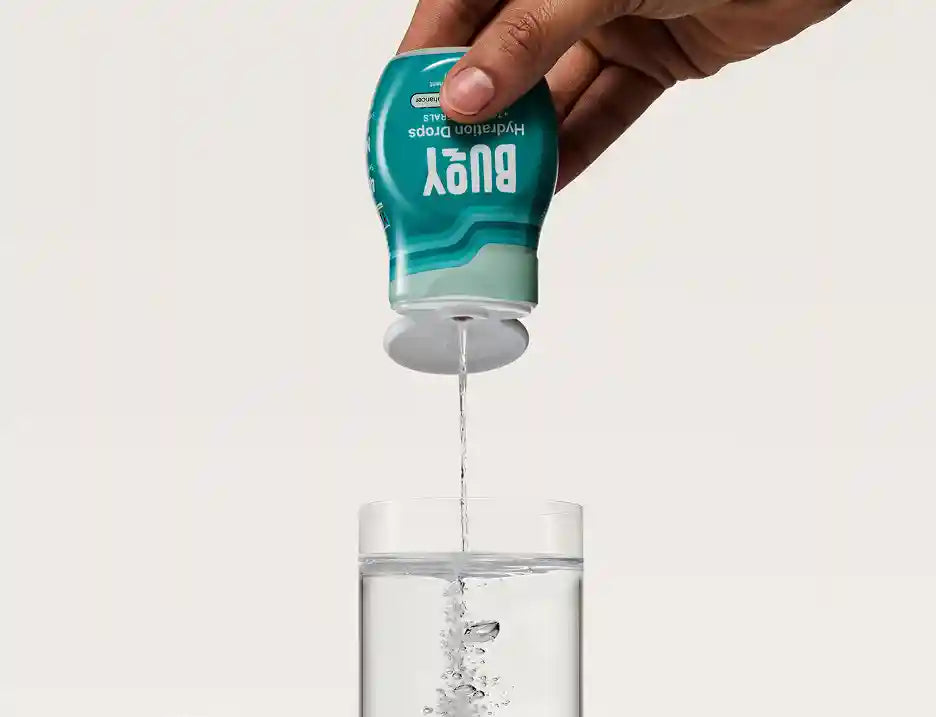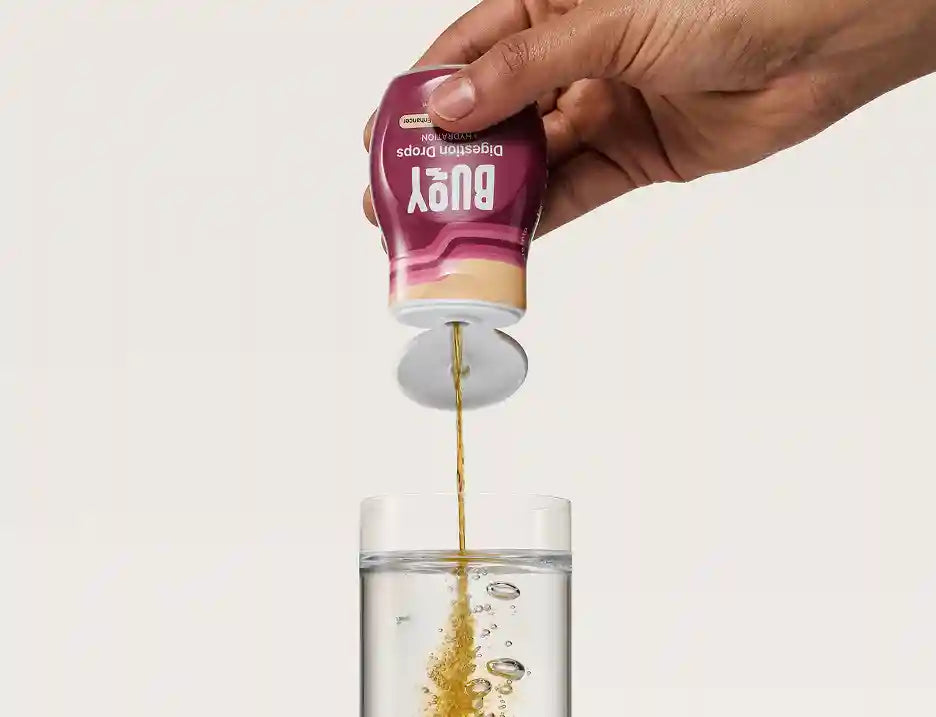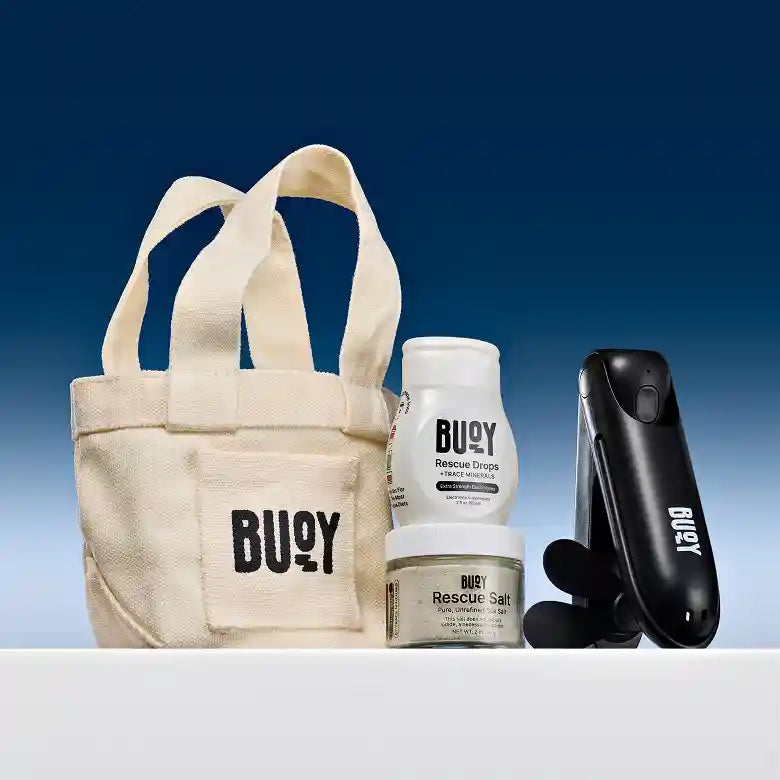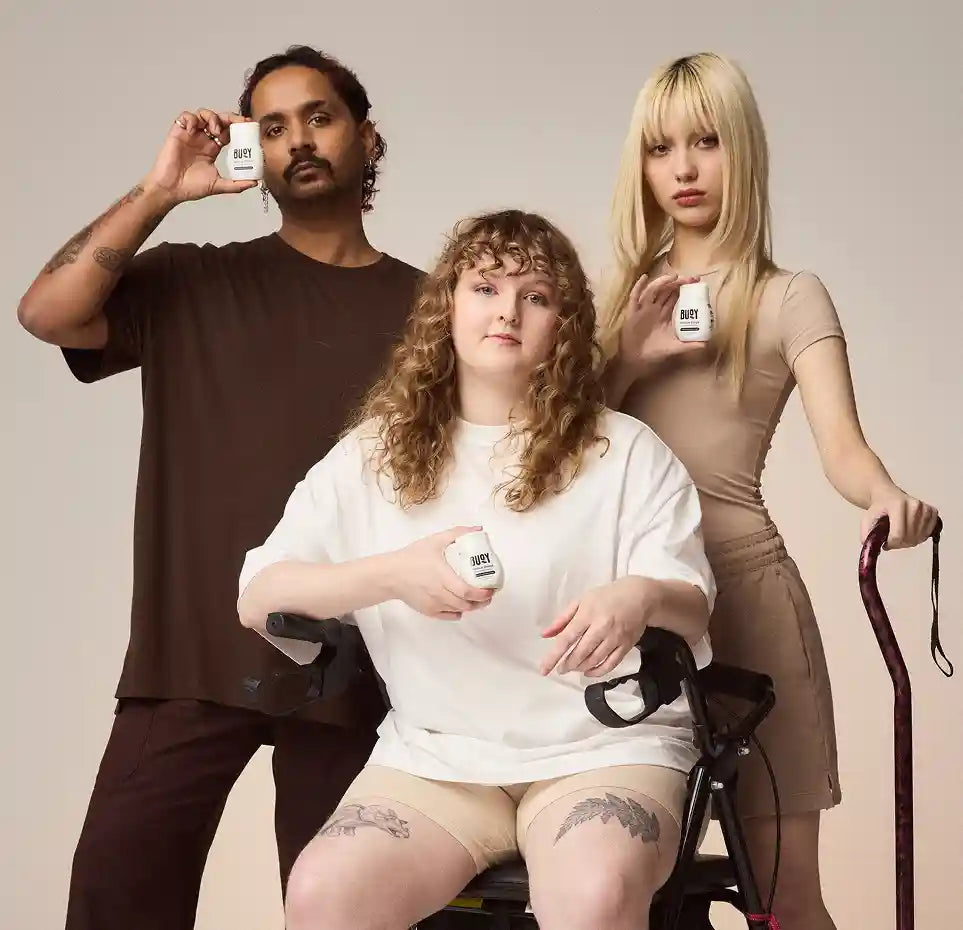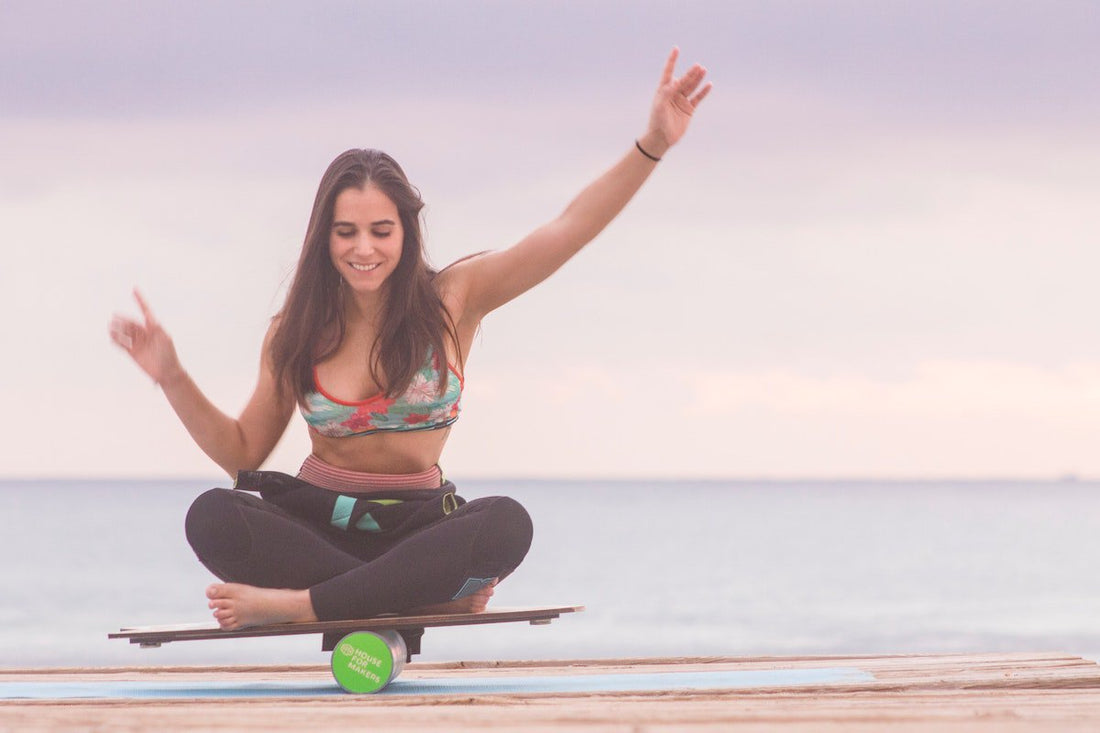
How to Stay Safe During Hot Weather Workouts with Proper Hydration
Share
As the temperature rises, your workouts can feel more intense - and they can become more dangerous if you're not properly hydrated. Whether you’re training for a summer race or just enjoying the outdoors, hydration is essential for staying safe and performing your best in the heat.
🧊 Quick Takeaways
- Even mild dehydration can impair performance and delay recovery (¹)
- Hot, humid weather increases fluid loss through sweat
- Electrolyte-enhanced hydration is key - not just plain water
- Hydration before, during, and after workouts prevents heat-related risks
- Buoy’s flavorless electrolyte drops are an easy way to hydrate smarter
In this guide, we’ll break down the latest research on hydration during hot-weather workouts, explain how your body responds to heat, and share practical tips to keep you cool, hydrated, and energized - no matter how hot it gets.
- What Happens to Your Body in Heat and Humidity?
- How Much Water Should You Drink?
- Can You Overhydrate?
- Heat Acclimation: What It Is And Isn’t
- 5 Daily Hydration Tips That Actually Work
- How to Hydrate Before, During, and After Hot Workouts
- Dehydration: Know the Warning Signs
- Recognizing and Preventing Heatstroke
- Hydrate Smart. Train Smarter
What Happens to Your Body in Heat and Humidity?
Exercising in the heat puts your body in overdrive. To stay cool, your heart works harder, pumping blood to the skin’s surface, while sweat evaporates to release heat - nature’s A/C.
But in humid weather, this natural cooling process gets disrupted. Moist air slows down sweat evaporation, which means your body retains more heat and loses more fluids. That’s why hydration matters more than ever when it's hot and sticky outside.
How Much Water Should You Drink?
On hot days, you can lose more than a quart of sweat per hour. A good rule of thumb is to drink about three cups of electrolyte-enhanced water every hour during moderate to intense exercise.
But remember: hydration isn’t one-size-fits-all. Sip water consistently throughout the day, and increase intake before and after workouts. Avoid guzzling large amounts all at once - more isn’t always better.
Can You Overhydrate?
Yes - overhydration can be dangerous. Drinking too much water too quickly dilutes sodium levels in your blood, leading to hyponatremia, or water intoxication. Symptoms include nausea, bloating, headaches, and in extreme cases, confusion or even coma.
In fact, a female runner in the 2002 Boston Marathon tragically died from overhydrating (²). It’s a clear reminder that hydration needs to include electrolyte balance, not just water.
Heat Acclimation: What It Is (And Isn’t)
Heat acclimation is your body’s way of adapting to hot weather over time. After a few weeks, your body becomes more efficient at regulating temperature, often sweating less to stay cool.
Some athletes have tried under-hydrating to speed up heat acclimation - but the science doesn’t back this up. A 2018 study found that drinking less water only led to more inflammation, higher cortisol, and increased physical stress, with zero performance benefits (³)(⁴).
5 Daily Hydration Tips That Actually Work
Whether it’s 90°F or 60°F, your body needs steady hydration to stay sharp. Try these practical tips:
-
Make Water Convenient – Keep a filled bottle within arm’s reach.
-
Use a Water Filter – Clean water tastes better = more sips.
-
Add Natural Flavors – Try lemon, lime, berries, or mint.
-
Carbonate It – Love fizz? A soda stream makes healthy seltzer easy.
-
Add Electrolytes – Use Buoy’s unflavored drops to enhance any drink with essential minerals - no sugar, no stevia, no calories.
How to Hydrate Before, During, and After Hot Workouts
💦 Before
Drink 16 oz of water 2 hours before your workout. This gives your body time to absorb fluids and reduces mid-workout bathroom breaks.
Pro tip: Don’t wait until you’re thirsty. Hydration starts early!
💪 During
Take small sips every 15 minutes. Your stomach can only process 5–7 oz at a time, so steady sipping helps avoid cramps or sloshing.
Adding electrolytes helps replace the minerals lost in sweat - which plain water can’t do.
🧊 After
Recovery hydration matters just as much. In hot conditions, you can sweat out 3–4 pints of fluid per hour. Replace what you lost - including sodium, potassium, and chloride - with electrolyte-rich fluids.
Try blending Buoy Hydration Drops into your protein shake to deliver amino acids and minerals in one go.
Dehydration: Know the Warning Signs
Even a 2% loss in fluid can affect performance (⁵). Know the difference between mild and severe dehydration:
⚠️ Mild Dehydration
-
Thirst
-
Dry mouth
-
Muscle fatigue
-
Poor focus
-
Headache
-
Low urine output
❌ Severe Dehydration
-
Rapid heart rate
-
Dizziness or confusion
-
Lack of sweat
-
Dark urine
-
Sunken eyes
-
Loss of skin elasticity
-
No tears or dry mouth
-
Risk of heatstroke
Recognizing and Preventing Heatstroke
Heatstroke occurs when your body loses its ability to cool down. If you stop sweating, feel dizzy, or experience confusion - stop immediately and hydrate with electrolyte-rich fluids.
Signs of Heatstroke
-
Flushed skin
-
High body temp
-
Rapid heartbeat
-
Disorientation or agitation
-
Loss of consciousness
-
Hallucinations
Children, older adults, and outdoor athletes are at highest risk. If in doubt, stop and hydrate.
Hydrate Smart. Train Smarter

Hot weather doesn’t have to derail your fitness goals. With the right hydration strategy - before, during, and after workouts - you’ll stay cool, energized, and safe.
And if you want a hydration edge that’s clean, portable, and proven? Buoy’s unflavored drops deliver 87+ trace minerals, fast-absorbing electrolytes, and zero sugar - clinically shown to hydrate better than water alone.
💧 Start squeezing hydration into your day. Your summer workouts will thank you.

